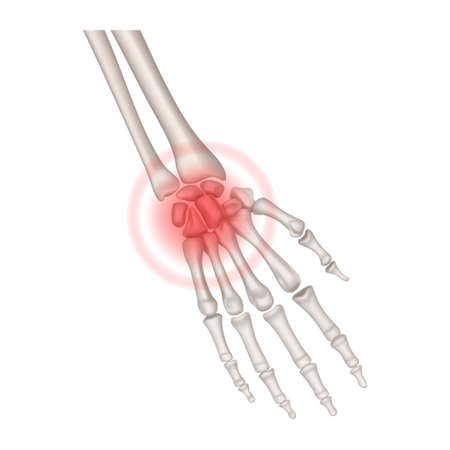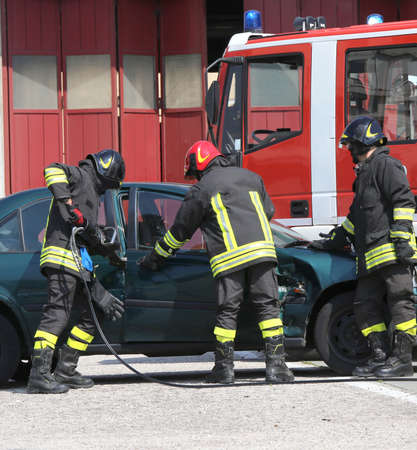Introduction to PTSD in First Responders
Post-Traumatic Stress Disorder, commonly known as PTSD, is a mental health condition triggered by experiencing or witnessing traumatic events. In the United States, first responders—including police officers, firefighters, and EMTs—face unique and frequent exposure to critical incidents that put them at higher risk for developing PTSD compared to the general population.
What is PTSD?
PTSD can develop after someone has been through a life-threatening event, such as accidents, natural disasters, violence, or other serious threats. Symptoms may include flashbacks, nightmares, severe anxiety, and uncontrollable thoughts about the event. For first responders, these symptoms can interfere with work performance, relationships, and overall well-being.
Why Are First Responders at Higher Risk?
First responders often encounter traumatic events as part of their daily jobs. Whether it’s responding to a violent crime scene, rescuing victims from burning buildings, or providing emergency medical care in high-stress situations, the repeated exposure adds up over time. The unpredictable nature of these emergencies makes it difficult for first responders to process trauma before being confronted with another crisis.
Statistics: PTSD Among First Responders in the U.S.
| Profession | Estimated Rate of PTSD (%) | Key Contributing Factors |
|---|---|---|
| Police Officers | 15-30% | Exposure to violence, death notifications, officer-involved shootings |
| Firefighters | 20-25% | Rescuing victims, fire-related fatalities/injuries |
| EMTs/Paramedics | 20-22% | Medical emergencies, mass casualty incidents |
Real-Life Stories from U.S. First Responders
A Police Officer’s Experience: Officer Taylor from Chicago shared that after responding to several fatal accidents and domestic violence calls within just a few months, he began having trouble sleeping and reliving the events during the day. He didn’t realize he was experiencing PTSD until a fellow officer encouraged him to seek help.
A Firefighter’s Perspective: Sarah, a firefighter in California, described how witnessing the aftermath of wildfires left her feeling numb and disconnected. She found herself avoiding social gatherings and struggling with guilt over not being able to save everyone.
An EMT’s Challenge: John, an EMT from New York City, explained how responding to multiple opioid overdoses in one shift made him feel helpless and anxious. He started noticing anxiety attacks whenever his radio went off for a new call.
The Importance of Understanding PTSD in First Responders
The high rates of PTSD among first responders highlight the importance of raising awareness and providing support for those who dedicate their lives to helping others. By understanding what PTSD is and why police officers, firefighters, and EMTs are more likely to be affected, we can take steps toward better care and prevention strategies tailored for these everyday heroes.
2. Common Triggers and Symptoms among First Responders
First responders—including police officers, firefighters, and EMTs—regularly face situations most people never experience. Understanding what triggers PTSD in these professions and how symptoms show up can help us support those who serve our communities every day.
Typical Traumatic Events Faced by First Responders
First responders often encounter high-stress situations that can be emotionally overwhelming. Some of the most common traumatic events include:
| Profession | Common Traumatic Events |
|---|---|
| Police Officers | Shooting incidents, violent crime scenes, child abuse cases, accidents with severe injuries or fatalities |
| Firefighters | Rescuing victims from burning buildings, witnessing deaths or severe burns, responding to car crashes, hazardous material exposure |
| EMTs/Paramedics | Treating critically injured or deceased patients, mass casualty incidents, dealing with distraught family members, repeated exposure to loss of life |
How PTSD Symptoms Commonly Manifest
The symptoms of PTSD in first responders might look a little different than in the general population. Here are some common ways symptoms show up:
- Intrusive memories: Flashbacks or nightmares about traumatic calls or scenes they’ve responded to.
- Avoidance: Trying to stay away from reminders of the trauma, like certain locations, people, or even types of calls.
- Mood changes: Feeling numb, hopeless, or disconnected from loved ones; increased irritability or anger.
- Hyperarousal: Always feeling “on edge,” easily startled, trouble sleeping, or difficulty concentrating.
- Physical symptoms: Headaches, stomach issues, fatigue, and unexplained aches and pains.
PTSD Symptom Comparison Table for First Responders
| Symptom Category | Description/Examples in First Responders |
|---|---|
| Intrusive Thoughts | Replaying disturbing calls or accidents during downtime or at home; nightmares about traumatic events on duty |
| Avoidance Behaviors | Avoiding certain neighborhoods, refusing specific types of calls, withdrawing from coworkers/family |
| Mood Changes | Losing interest in hobbies, feeling detached from others, mood swings at work or home |
| Hyperarousal Symptoms | Trouble relaxing off-duty, jumpiness when hearing sirens/alarms, chronic insomnia due to anxiety |
| Physical Complaints | Persistent headaches after stressful shifts, stomach problems following traumatic incidents |
Why These Symptoms Are Sometimes Overlooked
Because first responders are trained to handle emergencies and help others, they may feel pressure to hide their struggles. This can lead to symptoms being missed by coworkers and even family members. Recognizing these signs early is key to making sure first responders get the care and support they need.

3. Unique Challenges in the American Workplace
Workplace Culture in First Responder Organizations
In the United States, first responders—such as police officers, firefighters, and EMTs—work in environments shaped by tradition, teamwork, and a strong sense of duty. These workplaces often promote values like toughness, resilience, and self-sacrifice. While these traits help first responders perform under pressure, they can also make it difficult for individuals to talk about mental health struggles like PTSD.
The Impact of Stigma
Stigma around mental health remains a major barrier in many U.S. first responder organizations. Some common concerns include:
| Concern | How It Affects Seeking Help |
|---|---|
| Fear of Judgment | Worrying that coworkers or supervisors will see them as weak or unfit for duty if they admit to struggling with PTSD. |
| Job Security | Concerns that disclosing PTSD may risk their job, promotions, or assignments. |
| Culture of Silence | A belief that “toughing it out” is part of the job, leading people to avoid talking about their feelings or asking for support. |
Barriers to Getting Help
Even when resources are available, first responders in the U.S. often face unique barriers to accessing mental health care:
- Lack of Confidentiality: Some fear that seeking help will not remain private within their department.
- Limited Time and Resources: Long shifts and unpredictable schedules can make attending therapy or support groups difficult.
- Inadequate Training: Supervisors and coworkers may not recognize the signs of PTSD or know how to offer support.
- Bureaucratic Hurdles: Complicated paperwork and approval processes can discourage people from starting treatment.
Summary Table: Common Workplace Challenges for U.S. First Responders with PTSD
| Challenge | Description |
|---|---|
| Cultural Expectations | Avoid showing vulnerability; value stoicism over openness. |
| Mental Health Stigma | Mental health issues seen as weakness rather than injury. |
| Lack of Access to Care | Difficulties finding confidential, specialized providers familiar with first responder experiences. |
| Bureaucracy & Policy Barriers | Red tape and slow administrative processes delay treatment access. |
Why Addressing These Challenges Matters
If left unaddressed, workplace culture and stigma can prevent first responders from getting the help they need. By understanding these unique challenges, departments across the U.S. can take steps toward creating healthier environments where police officers, firefighters, and EMTs feel safe to seek support for PTSD.
4. Effective Coping Strategies and Support Systems
Overview of Practical Coping Mechanisms
First responders like police officers, firefighters, and EMTs face unique challenges that can lead to PTSD. Building healthy coping skills is crucial for managing stress and trauma. Here are some simple, effective strategies:
| Coping Strategy | Description | How to Practice |
|---|---|---|
| Mindfulness & Breathing Techniques | Helps calm anxiety and reduce stress in high-pressure moments. | Take slow, deep breaths; focus on the present moment for a few minutes each day. |
| Physical Activity | Exercise releases endorphins, which improve mood and help process emotions. | Go for a walk, run, or try yoga regularly—even short sessions make a difference. |
| Journaling | Writing down thoughts and feelings can provide clarity and emotional relief. | Spend 5–10 minutes writing about your day or experiences after tough shifts. |
| Healthy Routines | A consistent sleep schedule and balanced meals support mental health. | Try to go to bed and wake up at the same time daily; avoid excessive caffeine or alcohol. |
Peer Support in the First Responder Community
Talking with colleagues who understand your experiences can be incredibly helpful. Many departments in the U.S. offer peer support teams or Critical Incident Stress Management (CISM) programs. These groups allow first responders to:
- Share personal stories in a safe, confidential setting
- Receive guidance from peers trained in emotional support
- Access resources for further help if needed
Popular Peer Support Programs in the U.S.
| Program Name | Description | How to Access |
|---|---|---|
| CISM Teams | Group debriefings after traumatic calls or events. | Ask your department’s HR or wellness coordinator. |
| The Code Green Campaign | A national movement supporting first responder mental health through peer connections. | Visit codegreencampaign.org |
| S.A.F.E.R. (Stress Assistance For Emergency Responders) | A peer-driven hotline offering immediate support. | Call their dedicated number for confidential help. |
Professional Mental Health Resources Available in the U.S.
If coping strategies and peer support aren’t enough, professional help is available across the country. Many resources are tailored specifically for first responders and respect privacy:
- EAPs (Employee Assistance Programs): Most police, fire, and EMS agencies offer EAPs that connect you with licensed therapists familiar with first responder issues—often at no cost.
- The National Suicide Prevention Lifeline: A 24/7 helpline available at 988, offering crisis support for anyone struggling emotionally.
- The First Responder Support Network (FRSN): This nonprofit provides retreats and counseling specifically for emergency personnel (frsn.org).
- The IAFF Center of Excellence: This resource specializes in behavioral health care for firefighters and paramedics (iaffrecoverycenter.com).
- Counselors Specializing in Trauma: You can search online directories such as Psychology Today by filtering for “first responder” experience.
If you or someone you know is struggling with PTSD symptoms, remember—you are not alone, and reaching out for help is a sign of strength.
5. Promoting Resilience and Organizational Change
Building Resilience Among First Responders
First responders face tough situations every day. Supporting their mental health is key for both their well-being and job performance. Here are some practical ways to help first responders build resilience:
| Resilience Strategy | Description | Examples in Action |
|---|---|---|
| Peer Support Programs | Creating trusted spaces where first responders can talk openly with colleagues who understand their experiences. | Peer mentoring, support groups, buddy systems |
| Mental Health Training | Teaching skills for stress management, coping, and recognizing signs of PTSD. | Workshops on mindfulness, trauma awareness sessions |
| Access to Professional Help | Making it easy and stigma-free to reach out for counseling or therapy. | On-site counselors, partnerships with mental health providers |
| Flexible Scheduling & Rest Policies | Allowing time off after critical incidents and encouraging regular breaks. | Crisis leave, rotating shifts, built-in rest periods during long calls |
| Physical Wellness Initiatives | Promoting exercise, nutrition, and sleep as part of overall resilience. | Gym memberships, healthy meals at stations, sleep hygiene education |
Advocating for Cultural Shifts in Departments
The culture within police, fire, and EMS organizations often values toughness and self-reliance. While these are important qualities, it’s also crucial to make room for vulnerability and support. Here’s how departments can help shift the culture:
Normalizing Mental Health Conversations
- Leadership buy-in: When chiefs and supervisors openly discuss mental health and share their own experiences, it sets a powerful example.
- No more “suck it up” mentality: Replace outdated attitudes with open encouragement to seek help when needed.
- Mental health check-ins: Make checking in about emotional well-being a routine part of meetings or debriefings.
Changing Policies to Support Well-Being
- Crisis response protocols: Implement policies that ensure immediate support after traumatic events—like mandatory debriefs or access to professional counselors.
- Anonymity and confidentiality: Guarantee that seeking help won’t threaten careers or promotions.
- Continuous education: Offer ongoing training on PTSD awareness and coping strategies, not just one-time seminars.
The Impact of Organizational Change
A supportive work environment helps first responders feel safe reaching out for help. This leads to healthier teams, better job satisfaction, and improved service to the community. By promoting resilience and making cultural changes within departments, we can better protect those who protect us every day.


